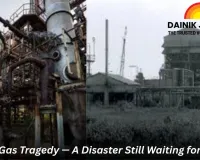India's Energy Dilemma – Navigating the Trilemma of Development, Climate, and Equity
Digital Desk
India stands on the frontline of a global contradiction. It is a country where two-thirds of households experience some form of energy poverty, yet it faces international pressure to slow its development in the name of climate mitigation .
This creates an immense challenge: how to power the aspirations of 1.45 billion people while being a responsible global citizen in the fight against climate change. The path forward requires a nuanced approach that the world must view with understanding, not hypocrisy.
The domestic reality is one of stark need. Early heatwaves in April 2025 overwhelmed the grid, causing protracted power outages as people struggled to keep cool . For a nation where access to reliable electricity is still a daily struggle for many, the annual increase in electricity demand of 7-8% is a testament to its pressing development imperatives .
The government's focus on coal, which accounts for about 70% of electricity generation, is driven by this reality and the need for energy security from an abundant domestic resource .
To expect India to simply phase out coal, as some Western nations demand, is to ignore the principle of common but differentiated responsibilities (CBDR) established in UN climate talks, which places the onus of historical emissions on industrialised nations .
However, the devastating health toll of fossil fuels—from outdoor air pollution that plagues Indian cities to indoor toxins from dirty cooking fuels that claim the lives of 27 out of every 1,000 Indian children—cannot be ignored .
The "all of the above" energy approach, which includes aggressive investments in nuclear, green hydrogen, and renewables, is a pragmatic start . India has surpassed Japan to become the third-largest solar energy producer and is fourth in the world for wind power, showing a genuine commitment to diversification .
The solution lies in a two-pronged strategy. Internationally, developed countries must provide the finance and technology they have long promised to support India's green transition. Domestically, India must move from an "ad hoc and supply-centric" approach to a strategic, whole-systems plan that targets end-users and prioritizes a just transition .
For India, the energy challenge is not an abstract environmental debate; it is about building hospitals, providing mass transit, and ensuring that the right to development is fulfilled for all its citizens. The world must either help fund this transition or step back from its criticism.











